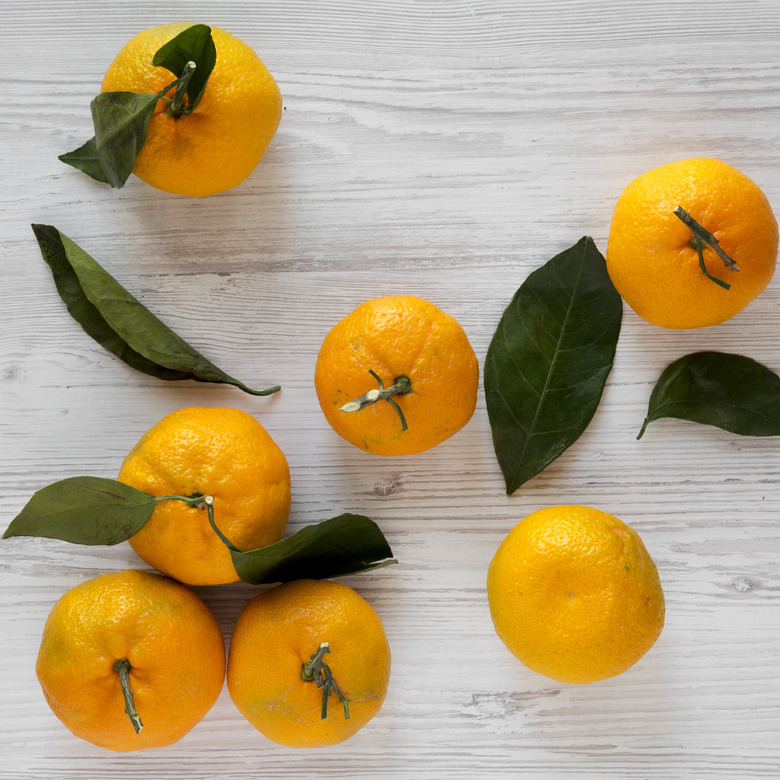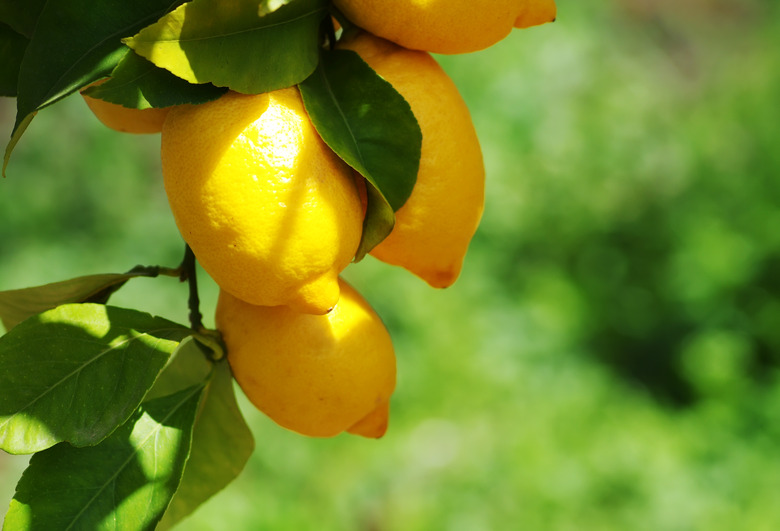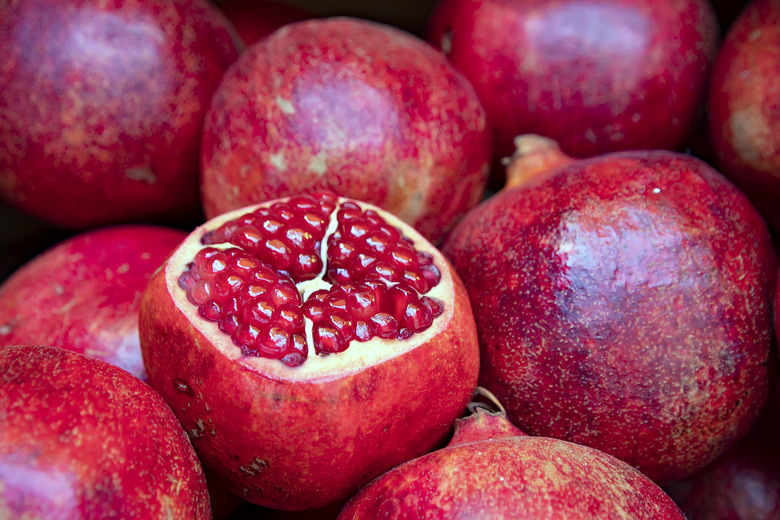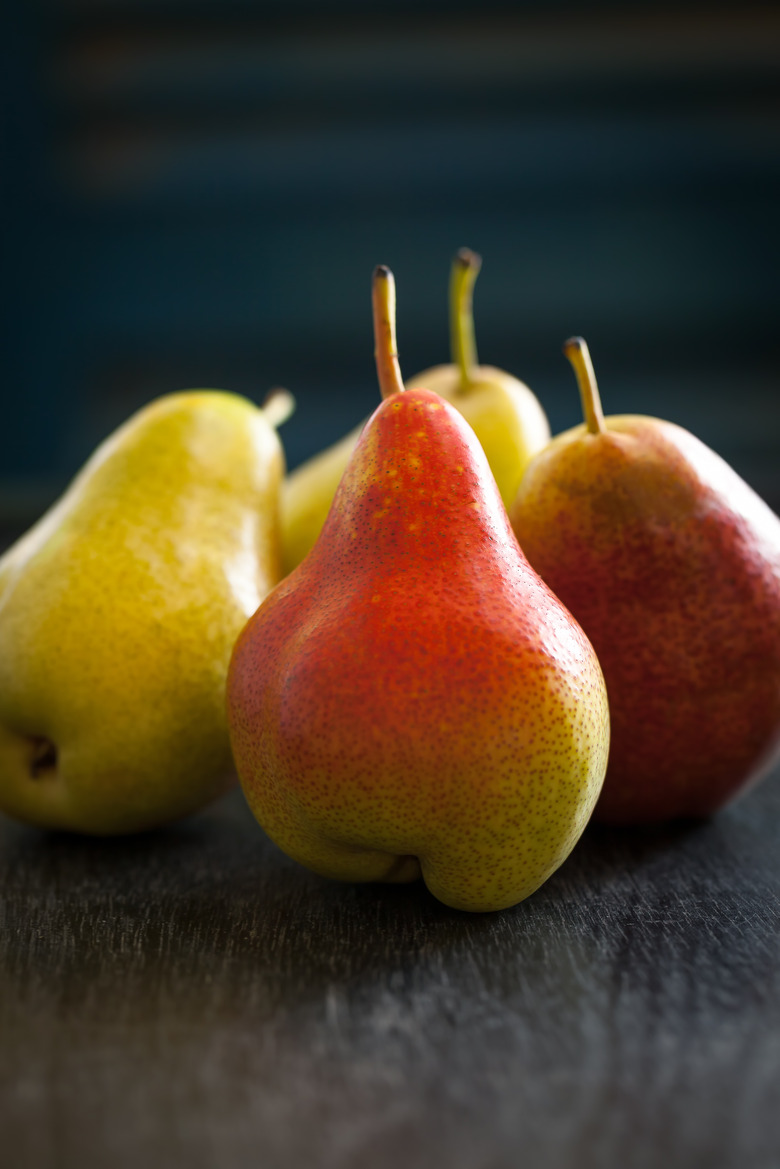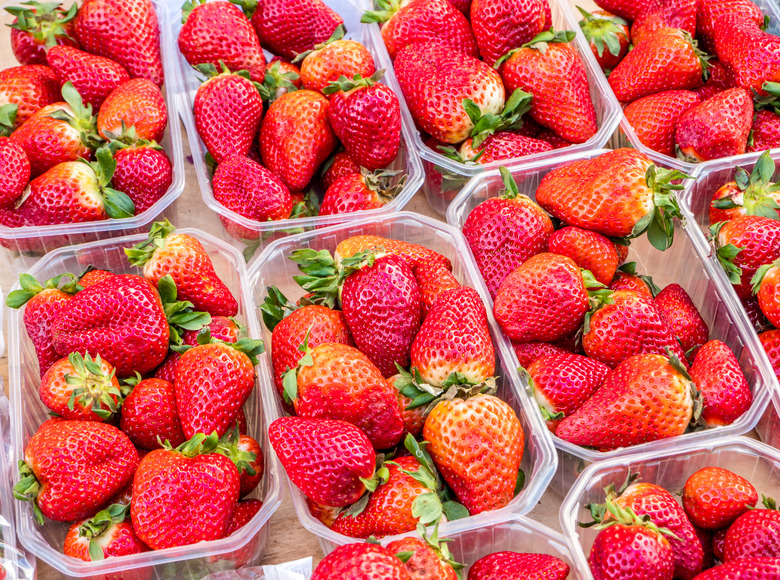Fruits That Grow In The Winter
While every fruit has a season and climate in which it thrives, many fruits still grow and ripen in winter. The variety of locally-grown fruits in season during the winter depends upon the climate. Cranberries ripen in cool-weather northern climes, while tangerines ripen for winter harvest in more tropical regions. If you plan to grow your own fruits, pick varieties that fare well in different seasons in your climate so you can have fresh fruit virtually every time of year. Even if you're more of a shopper than a gardener, knowing which fruits are at peak ripeness can help ensure the tastiest hauls from the grocery store and farmer's market.
It's Time for Tangerines
It's Time for Tangerines
Some varieties of tangerines, mandarins and even oranges ripen in winter months. For instance, satsuma and clementine mandarins grown in California's Ojai Valley are at their ripest in winter, while the Murcott variety isn't ripe until early spring. Darcy and Lee tangerine varieties from the same region are also at their peaks in winter, while Tahoe Gold, Shasta Gold and Yosemite Gold are spring tangerines.
As for oranges, both navel and blood oranges are ripest in winter through early spring in California, as well as in northern Florida. Valencia oranges from California have an expansive season of ripeness, lasting from late spring to early winter. In Florida, the Valencias are ripest in spring.
Grapefruits: Great in Winter
Grapefruits: Great in Winter
Some grapefruit varieties are also in season in winter. Ruby red grapefruit from Texas is ripe any time from late fall to late spring, peaking during the winter holiday season. In Florida, ruby reds are ripest in late fall to late spring. While Florida produces much of the grapefruit crop in the United States, California is another key supplier of this fruit, since this state's grapefruit-growing season lasts all year long.
Lemon and Lime Time
Lemon and Lime Time
Lemons and limes also thrive during cool, not freezing, winter weather. Both lemons and limes are susceptible to frost; many lime varieties even stop growing momentarily when the temperature drops below 50 degrees Fahrenheit. In California, Meyer lemons are ripe in winter, while Eureka lemons are grown year-round. In Florida, common lemon varieties are the best from midsummer to early winter. Bearss limes produce fruit in winter, and sometimes all year long, depending upon the climate. This variety is also popular as a potted tree that can be brought indoors in climates that may experience frost.
Of Pomegranates and Persimmons
Of Pomegranates and Persimmons
The antioxidant-rich pomegranate, notably present in the produce department around the winter holiday season, is at peak ripeness from late fall through early winter. Growers favor this fruit because its tree is hardy and resistant to pests and diseases.
The equally exotic-sounding persimmon is also ripe during the same time frame. This fruit that looks a bit like a small orange tomato is packed with antioxidants and vitamin C, with just one persimmon providing 27 percent of the daily recommended allowance of this vitamin.
A Craving for Holiday Cranberries
A Craving for Holiday Cranberries
Ever wonder why cranberry sauce is served for Thanksgiving and Christmas dinners? Cranberries, which are technically a fruit and not a berry, are in season in late autumn through early winter and are native to North America. The cranberry was an important food find for Native American tribes and early settlers in the Northeast, as few other fruits are in season in wintry climates during this time of year. Cranberries also grow well in the Northwest.
The Pear-fect Winter Fruit
The Pear-fect Winter Fruit
Some varieties of pears are also in season in winter. Growers classify most pears into winter and summer varieties. The winter pear harvest begins near the end of summer and well into autumn, as the pears are actually picked when mature but not quite ripe. They ripen at room temperature on their own. Summer pears, by contrast, are harvested at least a month earlier. The actual harvesting time varies from year to year, depending upon when the trees bloom and the general weather conditions that season.
Even though many pears are picked before it's technically winter, they're still considered a winter fruit; in fact, December is National Pear Month. All of the 10 most commonly grown pear varieties in the Uniteds States are in season at that time, readily available at a supermarket. These pears may not even be ripe yet; they're ripe when the area just below the stem is soft.
The Quirky Kumquat
The Quirky Kumquat
This oddly named Asian fruit, grown extensively in northern California, ripens in late fall through winter, depending upon the variety. These small, sweet-and-tart fruits are packed with vitamins and antioxidants. Like other citrusy fruits, they don't ripen well after being picked, so they're left intact on their trees until ready for use or sale. Kumquat trees are hardier than most citrus and can survive even with temperatures briefly dipping into the 20s.
A Surprise: Winter Strawberries
A Surprise: Winter Strawberries
While clearly a summertime treat in cool northern and Midwestern climates, strawberries are grown all year long in some parts of California. By comparison, strawberry season is late spring through summer in the Midwest and cool northern climates. Thanks to ideal growing conditions, California produces approximately 80 percent of all strawberries for sale in the United States.
A Case for Kiwis
A Case for Kiwis
The Kiwi is yet another fruit often found in the stores in winter. Domestically, California produces nearly all of the kiwi grown in the States. In California, the Hayward is the variety preferred by growers, as this type is large and sweet and thrives in the climate. Harvesting season runs from October through May, so fresh kiwi are available year-round in the United States. The bulk of fresh kiwi are harvested in late fall and early winter in the States.
References
- U.S. Department of Education: Seasonal Produce Guide
- Friend's Ranch: Growing Season Chart
- University of Florida Extension: How Can You Tell When Citrus Fruit is Ripe?
- Pittman & Davis: When are Texas Grapefruits in Season?
- One Green World: Bearss Lime Tree
- Redwood Barn Nursery: Winter Care of Citrus
- Women's Health: Your Ultimate Winter Fruit Guide
- U.C. Davis: Why the Pomegranate is the Perfect Winter Fruit
- USA Pears: Bosc
- Washington State University: Pears
- USA Pears: Celebrate National Pear Month
- University of California: Kumquats
- Farmer's Market LA: What's in Season in February
- Kiwifruit: Availability of Kiwifruit
